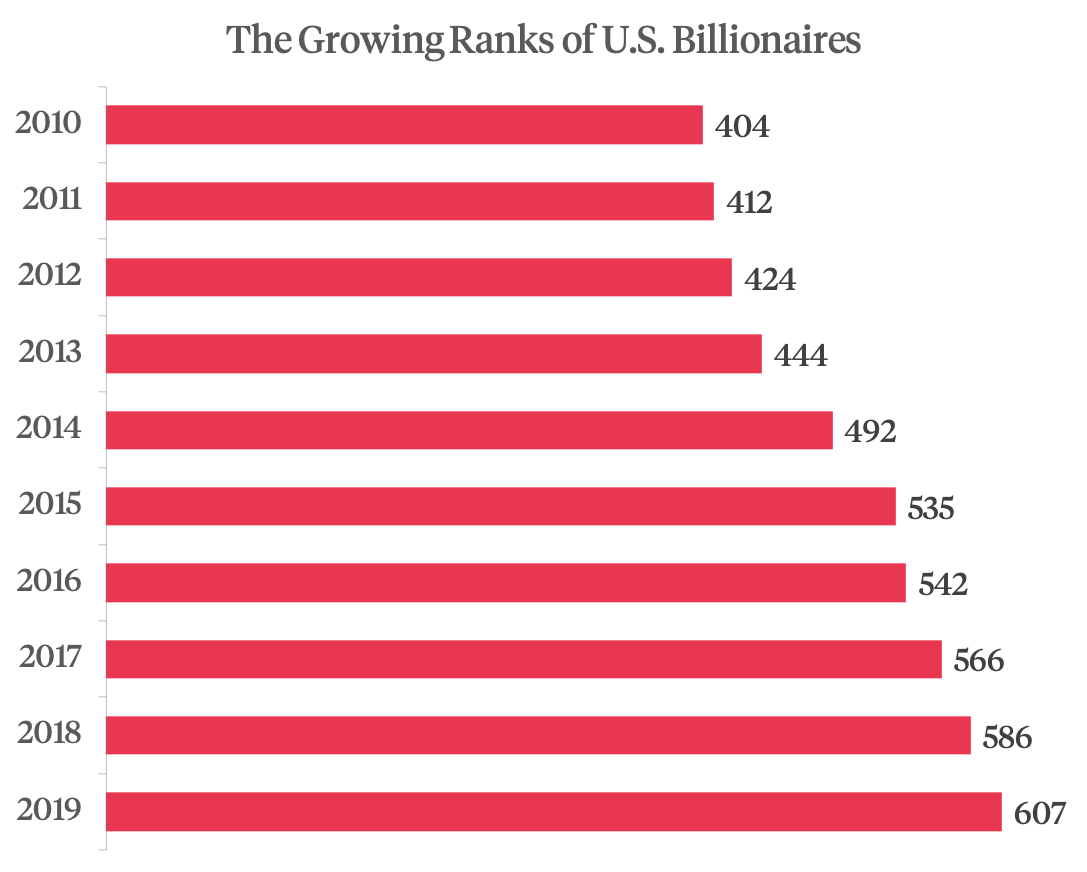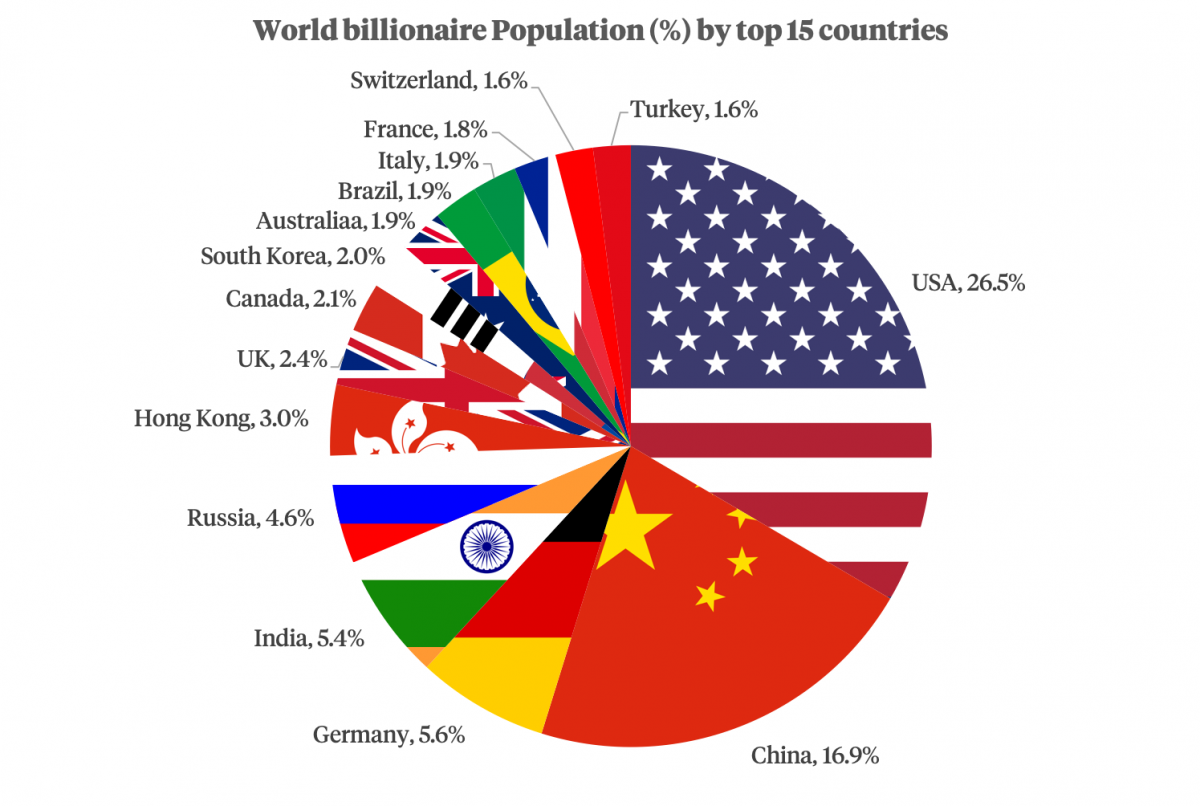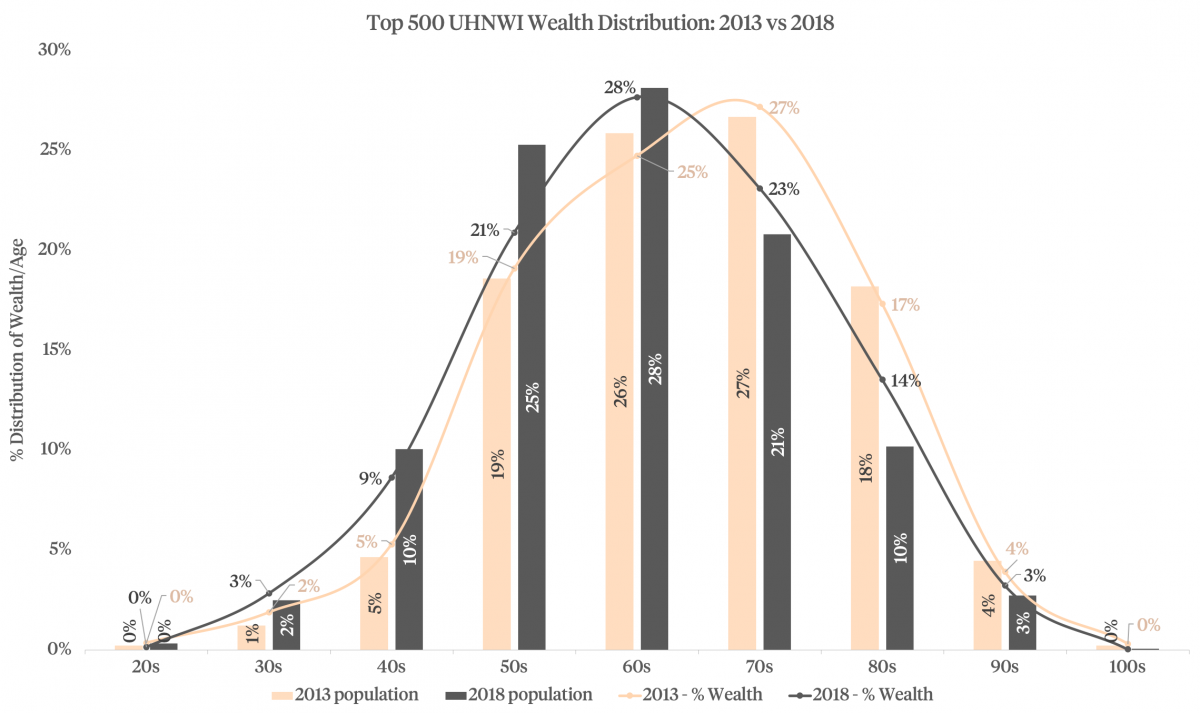The Americas: status and opportunity
Home to more than 26.5 per cent of the world’s billionaires, we evaluate the Americas' status as the top client pool…
The United States presents a remarkable opportunity to the global superyacht market. Home to 607 Billionaires (Forbes, 2019), the US alone holds more than 26.5 per cent of the world’s wealthiest individuals and is also one of the few regions that is managing to retain is billionaire population.

As stated by Forbes, “The Americas, driven by a resurgent Brazil, and the U.S. are the only two regions that have more billionaires than they did a year ago. There is now a record 607 in the U.S. That includes 14 of the world’s 20 richest.” America is the most well-represented nation in terms of superyacht ownership and potential ownership, meaning that many companies are increasingly reliant on the affluence of US clients, which poses an interesting dynamic between the US and European shipyards.

“The superyacht market today, for a major part is led by the US market throughout the year,” says Raphael Sauleau, CEO of Fraser, which was recently acquired by US recreational boat retailer, MarineMax. “[The US] still represents over 40 to 55 per cent of our business today, depending on which company we’re looking at. But everyone does some transactions with US customers.”
“The US demographic for yacht buyers is still comprised of [the same client profiles] as in the past, such as Tech, Land Developers, Car Dealers, Food Creators, etcetera,” says Joe Foggia, Sales Broker at Northrop & Johnson. “But we are seeing more and more of the heirs to these fortunes coming out now.”
The owner demographic in the US is one that appears to have remained fairly consistent in terms of occupation. But across the globe, what we are seeing among the billionaire population is a generational shift in wealth. While this may be marginal, as illustrated in the comparative chart below, the UHNW population below the age of 60 is on the rise, which could see some interesting shifts in the superyacht market dynamic, from the way that yachts are designed to how the so-called ‘next generation of owners’ wish to use their yachts.

“In a sense, as the [US] economy continues to boom, and fortunes grow, ‘the heirs are compounding’,” Foggia continues. “Due to their personal experiences growing up on yachts, they understand the value and enjoyment of keeping their families together on a yacht, and they now have the available financial ability to perpetuate their experience, and purchase their own yacht.”
For northern European shipyards the focus on the US market clearly holds a great deal of potential. “Right now, roughly 60 per cent of [Heesen’s] work is coming from [the US],” says Thom Conboy, Director of Sales at Heesen US. “But, that’s not unusual for northern European shipyards. If you look at Feadship, Amels Lürssen, Abeking & Rasmussen…it is pretty much a common theme.
America is the most well-represented nation in terms of superyacht ownership and potential ownership, meaning that many companies are increasingly reliant on the affluence of US clients, which poses an interesting dynamic between the US and European shipyards.
“I would say that between 50 and 75 per cent of the work comes from the US, and it has pretty consistently,” Conboy continues. “It may drop down to 50, but it typically never drops below 50 per cent, so it is a very vibrant market and it’s very strong.”
Largely it would seem that many American clients bypass their native new build market and look towards the European shipyards when considering a new project. The dynamic is reflected among US new build activity where there are currently 12 superyachts under construction across eight shipyards. So far this year, four yachts have been delivered in the region.
Superyacht construction is a notoriously tough business in any region and as Conboy reiterates, it is one that few have succeeded in. “If you want to make money in the yacht business, do anything in the boat business other than building boats,” says Conboy. “Rent them, charter them, manage them, repair them, paint them, don’t build them. The margins are so slim, and it’s only a very elite crowed now that can do it. It’s a tough business.”
Red tape surrounding the US sales market has been somewhat alleviated in the last year, with the introduction of Foreign Trade Zones (FTZ) in the US, where foreign-flagged yachts can be exhibited and sold to US citizens while in US waters “The main Northrop & Johnson office is located at Lauderdale Marine Center (LMC), [which] is a FTZ,” explains Foggia.
“The immediate recognisable benefits are that a yacht that is ‘Not for sale to US Residents’ can be shown in the FTZ. This seems to be working for all brokerage houses that have yachts for sale and may be having work done, as it is easier to show the vessel without having to move it to the Bahamas, etcetera.”
“It gives foreign yachts more options to be offered for sale,” says Mark Elliot of IYC. These zones have, essentially, brought parity to the high demand among US clients and the high supply of foreign-flagged vessels; a no-brainier, one would think, and a welcome injection of stimulus to the wider market.
From an economic perspective in the US, the landscape appears to be becoming increasingly favourable for superyacht clients, strengthening up the region as a hub for potential clients and superyacht activities.
“The overall financial stability of the builders in Europe is better,” says Foggia. “EU countries value the manufacturing of luxury yachts and all the economic stimulus and jobs created by building them. They do not view this as building a ‘toy for the rich’, or it is not looked down upon for that. Therefore, the builders are able to operate with the support of the masses.”
As Foggia explains, the sub-contractor business model out in the US differs from that found in the European market. “For instance, Viareggio has many yacht builders. The subcontractor base will work at several different shipyards. If one shipyard is slow, typically the subcontractors are working at another shipyard in the same location. The point is, [in Europe] the subcontractor is always working in the luxury yacht sector.
“In America the shipyards are too spread out and must employ massive permanent workforces. The concept of a sub-contractor in America is looked down upon, because if the shipyard is slow, then the subcontractor may be off building a house, or a commercial building. When they do this, they lose their feel for the high-quality commanded in the luxury yacht market.”
Of course, from an economic perspective in the US, the landscape appears to be becoming increasingly favourable for superyacht clients, strengthening up the region as a hub for potential clients and superyacht activities. “Everything in the economy is incredibly favourable; people are making money, manufacturing is back and we have some of the best cruising grounds right off the back of the West Coast,” observes Conboy.
Profile links
Northrop and Johnson (Brokerage)
IYC - International Yacht Collection (Brokerage)
NEW: Sign up for SuperyachtNewsweek!
Get the latest weekly news, in-depth reports, intelligence, and strategic insights, delivered directly from The Superyacht Group's editors and market analysts.
Stay at the forefront of the superyacht industry with SuperyachtNewsweek
Click here to become part of The Superyacht Group community, and join us in our mission to make this industry accessible to all, and prosperous for the long-term. We are offering access to the superyacht industry’s most comprehensive and longstanding archive of business-critical information, as well as a comprehensive, real-time superyacht fleet database, for just £10 per month, because we are One Industry with One Mission. Sign up here.
NEW: Sign up for
SuperyachtNewsweek!
Get the latest weekly news, in-depth reports, intelligence, and strategic insights, delivered directly from The Superyacht Group's editors and market analysts.
Stay at the forefront of the superyacht industry with SuperyachtNewsweek



